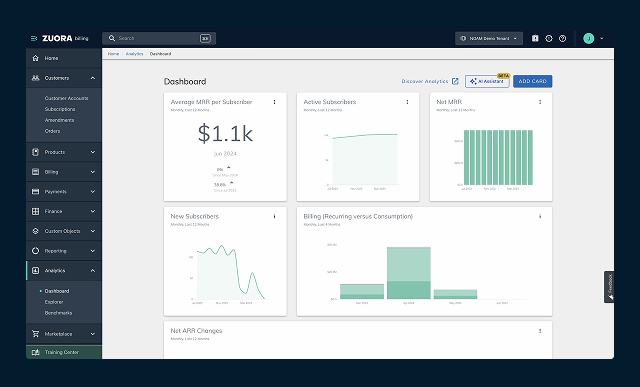This is a contributed commentary written by Steve Sichtman in his capacity as VP of multi-channel development at Jitterbit, a company that describes itself as an API transformation specialist with an acute interest in the ERP market and wider transept of enterprise software platforms and tools.
Looking back, Sichtman says he has been taking stock of the ‘transformational dash’ we have all experienced in recent times; he refers to what he calls the ‘amorphous blob of time’ that now extends over a two-year period when all-hands Zoom calls became the norm as the global business community rushed to deal with the demand spikes, service disruptions and product shortages stemming from the early days of the pandemic.
Sichtman writes as follows…
Scrub the surface of this recent period and you’ll start to see something quite profound in the wider world of business transformation. The lockdown announcement back in March 2020 was a starting pistol; throughout the rest of the year, the average business in EMEA galloped through the equivalent of seven years of digitisation according to McKinsey.
It’s been a race to innovate at unprecedented speed, to scale to service the needs of customers and connect employees who can’t fully move back to their offices. But the race isn’t over. Companies that were slow off the blocks are still playing catch up.
In truth, some might not make it to the finish line.
An overarching narrative for change
The sum effect of all this disruption and transformation forms an overarching narrative. Running the crucial anchoring leg here are the experts from the world of enterprise systems integration and ERP.
They kept the world moving.
Integration and ERP solutions bore the strain of the accelerated transformation that was called for; these were (and still are) the connectors and management tools joining the dots between the hundreds, often thousands, of software solutions, platforms and technologies businesses deploy to deliver their products and services to customers. Those companies with automated solutions already in place had a head start in the digital transformation race.
Our own report entitled ‘Integration and the Digital Road to Recovery’, surveyed over 2,000 EMEA customers on how their businesses moved to warp speed to meet the challenges of the first 18 months of the pandemic. Flick through and you’ll see that companies increased their investment in e-commerce integration solutions by 99% in 2020, while employee experience rose by 72% in the same period.

At the other end of the scale, investment in integrations for customer experience fell by 15% during 2020, having previously been the number one investment for multiple years.
Jitterbit’s reading of this shift is that, as the realities of the pandemic became apparent, companies pivoted and moved a portion of their IT ‘management matrix’ investment away from strategic applications delivering speed and features (customer experience), and towards operational applications dedicated to improving business effectiveness (e-commerce and employee experience).
The age of post-modern ERPism
Elsewhere, as well as a double-digit increase in 2020 investment in integration for large ERP systems from the likes of SAP and Microsoft, 2020 data also shows a tripling in investment in what the report calls ‘mid-market’ ERP systems, like Infor, Epicor and Sage.
It appears that Gartner’s prediction of a ‘post-modern ERP era’, where monolith vendors are replaced by a patchwork of best-of-breed solutions, has come to pass. But it’s not as simple as just throwing them together.
Developing a custom ERP system consisting of multiple vendors can deliver greater flexibility and lower costs, but it requires more complex integration solutions to hold it all together. Once again, integration is under the hood, quietly determining the success of each and every business transformation.
ERP as a hyper-automation anchor
The finish line is not yet in sight. We all have more rounds and circuits to run… and more gains to make – especially when it comes to ERP:
Looking even further ahead, I predict ERP to outgrow its current position, where it’s nestled deep in organisations with decades of history of development. We’re looking at a rebrand; ERP will go from a solution, to hyperautomation’s anchor. We’ll see more real world uses where AI, IOT, and blockchain make the most of what ERP offers.
I think we’re going to see the hybrid on-premise/cloud ERP – currently the preferred solution – wound down. It’s hard to predict when this will happen, but with the wider move towards the cloud, the uptime of SaaS, and the agility of a SaaS, it looks like we’re heading to a full Sass (Cloud-based ERP that runs with the vendor) future.
It’s a tough time to be a prediction maker, but the future looks bright ERP-wise. To get there though, businesses need to move quickly and provide the highest level of product, service, and employee experience to stay with the chasing pack going into and beyond 2022.




